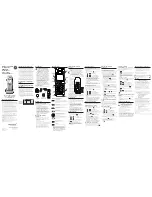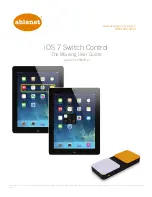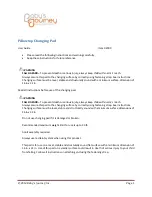
P/N 109027 rev. C
3
QS30 Series Diffuse-Mode Laser Sensor
Banner Engineering Corp.
•
Minneapolis, MN U.S.A.
www.bannerengineering.com • Tel: 763.544.3164
Class 2 Laser Safety Notes:
Low-power lasers are, by definition, incapable of causing eye injury within the
duration of the blink (aversion response) of 0.25 seconds. They also must emit only
visible wavelengths (400 - 700 nm). Therefore, an ocular hazard can exist only if an
individual overcomes their natural aversion to bright light and stares directly into the
laser beam.
For safe laser use:
• Do not permit a person to stare at the laser from within the beam.
• Do not point the laser at a person’s eye at close range.
• Terminate the beam emitted by a Class 2 laser product at the end of its useful path.
Locate open laser beam paths either above or below eye level, where practical.
CAUTION
Use of controls or adjustments or performance of procedures other than
those specified herein may result in hazardous radiation exposure; per
EN 60825.
Do NOT attempt to disassemble this sensor for repair.
A
defective unit must be returned to the manufacturer.
!
Class 1
Lasers that are safe under reasonably foreseeable
conditions of operation, including the use of optical
instruments for intrabeam viewing.
Reference 60825-1 Amend. 2 © IEC:2001(E),
section 8.2.
Class 2
Lasers that emit visible radiation in the wavelength
range from 400 nm to 700 nm where eye
protection is normally afforded by aversion
responses, including the blink reflex. This reaction
may be expected to provide adequate protection
under reasonably foreseeable conditions of
operation, including the use of optical instruments
for intrabeam viewing.
Reference 60825-1 Amend. 2 © IEC:2001(E),
section 8.2.
Description of Laser Classes






























